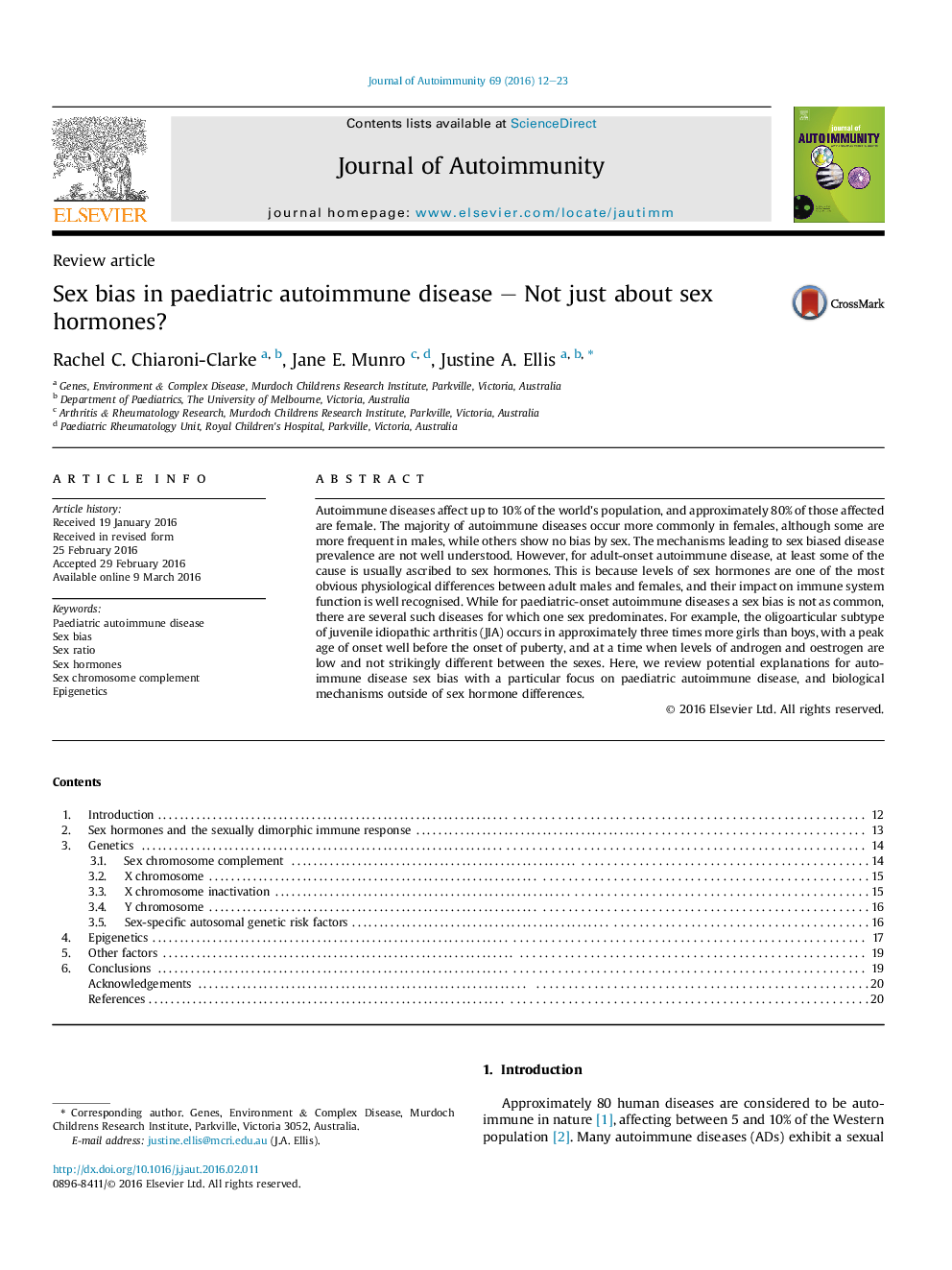| Article ID | Journal | Published Year | Pages | File Type |
|---|---|---|---|---|
| 3367663 | Journal of Autoimmunity | 2016 | 12 Pages |
•Autoimmune disease (AD) is more common in females than males.•The reasons for the sex bias are unclear, but are thought to involve sex hormones.•Some ADs with a pre-pubertal age of onset are also more common in females.•Mechanisms other than circulating sex hormones should therefore be examined.•Evidence grows that sex-specific genetic and epigenetic factors are highly relevant.
Autoimmune diseases affect up to 10% of the world's population, and approximately 80% of those affected are female. The majority of autoimmune diseases occur more commonly in females, although some are more frequent in males, while others show no bias by sex. The mechanisms leading to sex biased disease prevalence are not well understood. However, for adult-onset autoimmune disease, at least some of the cause is usually ascribed to sex hormones. This is because levels of sex hormones are one of the most obvious physiological differences between adult males and females, and their impact on immune system function is well recognised. While for paediatric-onset autoimmune diseases a sex bias is not as common, there are several such diseases for which one sex predominates. For example, the oligoarticular subtype of juvenile idiopathic arthritis (JIA) occurs in approximately three times more girls than boys, with a peak age of onset well before the onset of puberty, and at a time when levels of androgen and oestrogen are low and not strikingly different between the sexes. Here, we review potential explanations for autoimmune disease sex bias with a particular focus on paediatric autoimmune disease, and biological mechanisms outside of sex hormone differences.
